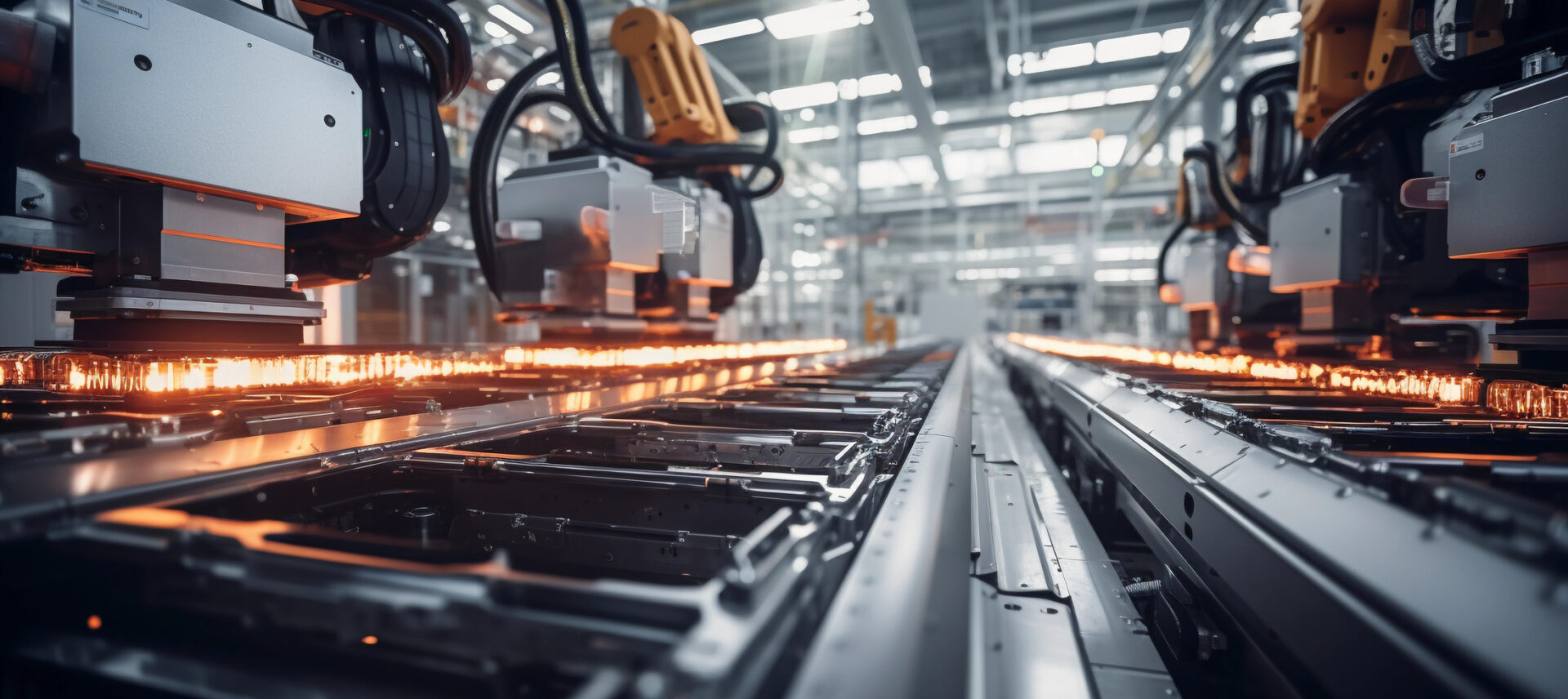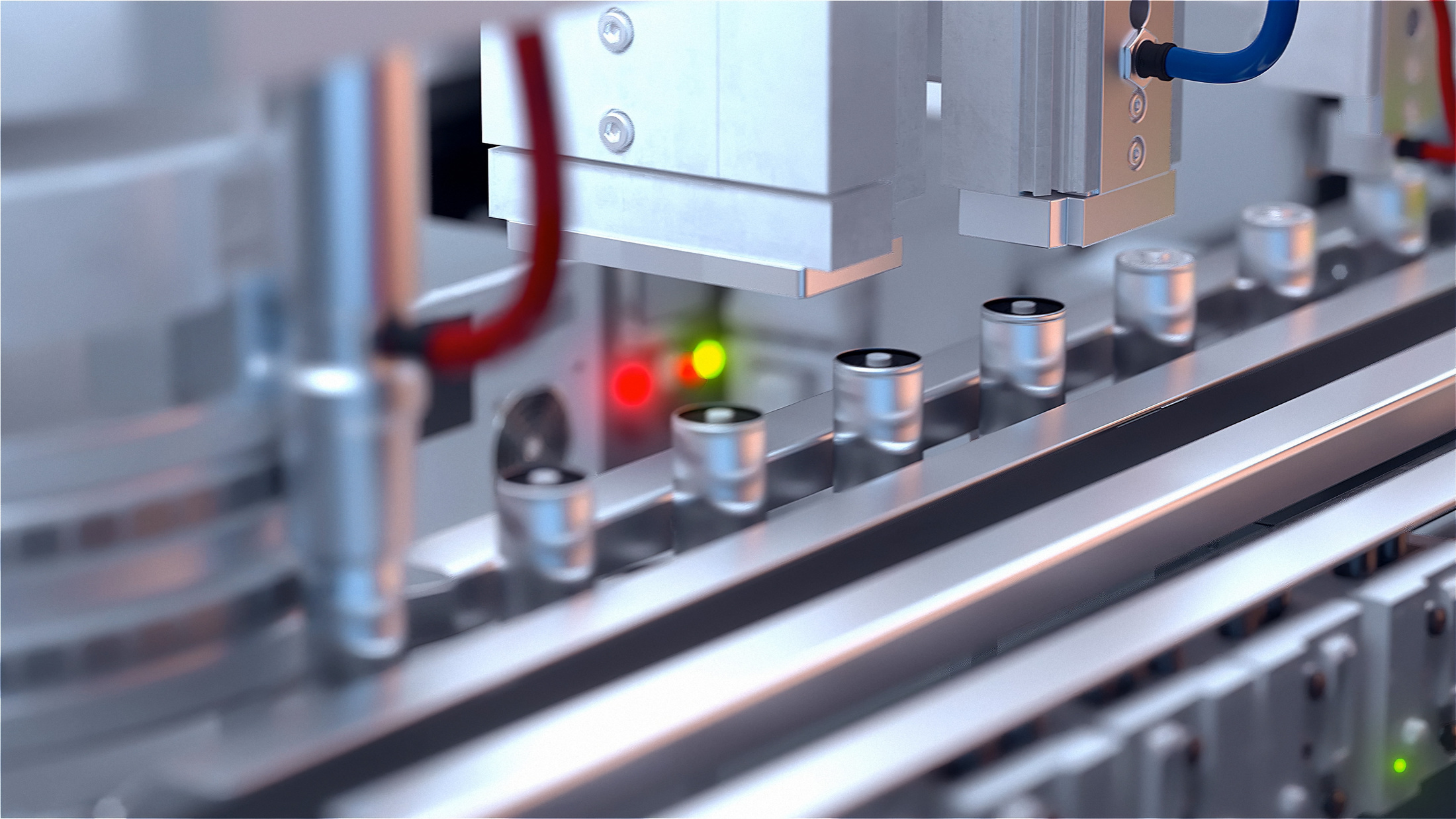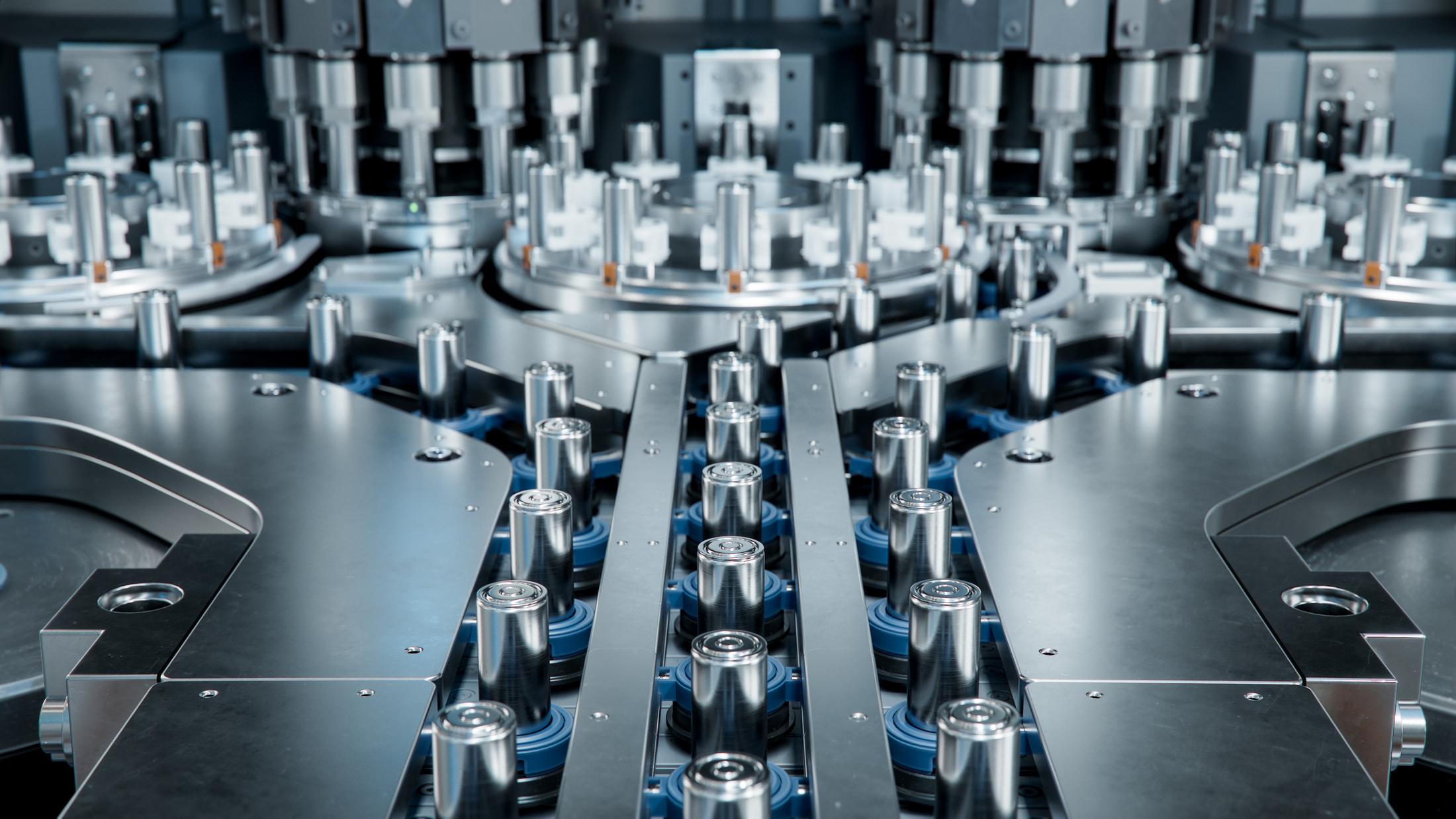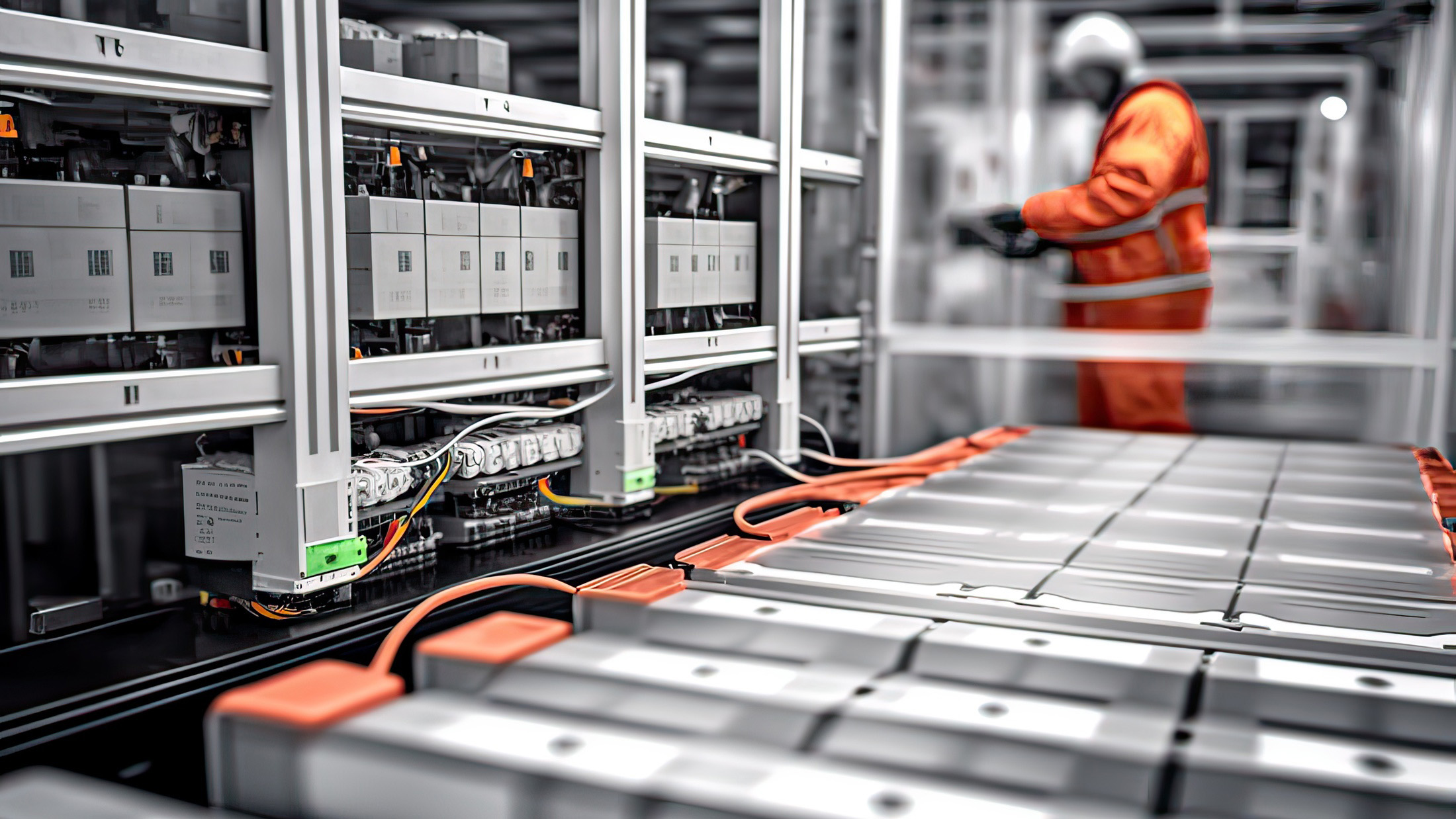News & Insights
How battery manufacturers are integrating digital methods to adapt to a changing market
This article explores what’s driving the shifts in battery manufacturing and how companies are responding with digital solutions.

As the demand for energy storage escalates and technology advances, battery manufacturers are increasingly advancing production methodologies to optimize efficiency and output. In an industry experiencing rapid change, embracing digital transformation from data analytics to AI-driven quality control has become a cornerstone for manufacturing. This article explores what’s driving the shift and how companies are revolutionizing the processes that create state-of-the-art energy storage solutions.

The drivers that are impacting energy storage manufacturers
A number of drivers are coming together to create tectonic shifts in battery manufacturing. While these drivers have triggered a transformative phase for battery manufacturers, they are not isolated factors but rather interconnected elements of a complex industrial ecosystem. Here are the dynamics at play:
- Rise of electric vehicles: Growing demand from the EV market is pressuring manufacturers to innovate in efficiency and charging speed.
- Growth of renewable energy: The rise in use of wind and solar energy requires efficient, large-capacity batteries, pushing manufacturers to innovate in storage technology.
- Onshoring and localization: Geopolitical factors and supply chain resilience are driving a shift toward domestic manufacturing, posing both challenges and opportunities.
- Environmental regulations: Stricter policies mandate greener manufacturing processes and materials, requiring investments in sustainable technologies.
- Technological advancements: From sensors that monitor real-time performance metrics to AI algorithms that predict maintenance needs, technology is a major force in modernizing battery manufacturing, revolutionizing production efficiency, quality control, and predictive maintenance.
- Market competition and consumer expectations: With more players entering the field, competition is fiercer than ever. Manufacturers must continuously innovate to stay ahead.
The urgency to adapt isn’t merely an internal enterprise; it’s also a response to a market that demands quicker, more efficient, and more sustainable solutions. These drivers collectively serve as a catalyst for change, propelling manufacturers to look beyond traditional approaches and embrace innovative methods that could not only redefine their business models but also set new industry standards.

The rise of digital techniques and automation in battery manufacturing
Across all manufacturing sectors, there is increasing conversation about Industry 4.0. Industry 4.0 refers to the digital transformation of manufacturing/production and related industries through smart technology and interconnected devices, enhancing automation, data exchange, and real-time analysis. For the energy storage sector, adoption of these ideas is accelerated as rapid growth pushes manufacturers to build and expand.
At Salas O’Brien, here are the opportunities we’re seeing within this space:
Leveraging digital twins
A digital twin is a virtual representation of a physical object, system, or process using sensors, software, and other technologies to collect data about its physical counterpart. A great example of a digital twin most of us are familiar with is Google Maps. It’s a virtual representation of the tangible, physical road system that gives real time reporting on traffic conditions, detours, and accidents so that drivers can make informed decisions about their routes.
The primary aim of a digital twin is to provide a framework for understanding, analyzing, and optimizing the object, system, or process it represents. This technology can help battery manufacturers transition from reactive to predictive and proactive modes of operation. A digital twin of the factory floor facilitates scenario mapping without risking anything about the physical asset. It can also allow engineers to troubleshoot problems, optimize performance, and even predict future maintenance needs.
One of the most significant uses of digital twins is that they can be used to test assumptions, and that allows leadership teams to validate decisions. Digital twins offer real impact in modeling processes and equipment. For battery manufacturers, they create the opportunity to test changes in process without disruption. They can also be used to train staff digitally without having to pull resources from the factory floor.
Bridging the talent gap with augmented reality
Anyone who has spent time on a factory floor is well acquainted with standard operating procedures (SOPs). These essential documents offer structured guidelines to ensure that operations run smoothly, safely, and in full compliance with regulations. In addition, SOPs serve as invaluable training tools for educating employees on both operational tasks and maintenance procedures.
However, training needs are becoming more complex. This is where augmented reality (AR) can make a profound impact. By virtually simulating the SOPs (for example, the procedures for opening and maneuvering a gearbox), AR can create an interactive, hands-on learning environment. This immersive approach can significantly shorten the learning curve associated with mastering new equipment or adapting to updated manufacturing processes. AR can also accelerate the adoption of best practices across the workforce by documenting them and providing easy digital distribution.
Automation through cobots
One of the pivotal developments shaping automation in battery manufacturing is the rise of collaborative robotics, commonly known as “cobots.” These robotic systems are designed to work in conjunction with human operators. While cobots excel in executing tasks requiring precision, speed, and consistency, human workers bring qualities such as innovative thinking, problem-solving abilities, and emotional intelligence to the operation.
Cobots are especially effective at automating repetitive and labor-intensive tasks. This not only mitigates employee fatigue (and burnout) but also frees up human talent for more rewarding responsibilities.
Enhanced visibility through digital track and trace
Digital track and trace systems encompass a range of technologies and methodologies designed to monitor, document, and analyze the flow of materials, components, and finished products throughout the supply chain and production process.
The need for track and trace technology has never been higher in battery manufacturing. Implementing a robust digital track and trace system offers several advantages such as enhanced visibility, better compliance, improved quality control, and more efficient resource utilization. It also protects manufacturers from fraud and provides proof of compliance and quality if something goes wrong in another manufacturer’s ecosystem.
Hiring a champion to oversee digital transformation
Overseeing the integration of digital technologies and analytics across manufacturing processes, supply chain management, client management, and other digital solutions for business goals can fall under the purview of the Chief Information Officer (CIO) or the Chief Operations Officer (COO).
However, depending on the company’s specific needs and structure, we are also seeing an increase in hires for a Chief Digital Officer (CDO). This role usually involves setting the company’s digital strategy and leading efforts to implement digital solutions such as data analytics, machine learning, automation, and other Industry 4.0 technologies. The person in this position usually collaborates closely with other C-suite executives and reports directly to the CEO or the board and has a significant impact on the company’s strategic direction and competitive positioning.

How Salas O’Brien can help battery manufacturers make the transition to digital operations
Salas O’Brien, with its deep-rooted expertise in multidisciplinary engineering, sustainability, and digital solutions is uniquely positioned to guide battery manufacturers through this digital transformation journey.
Our team of experts can help you develop a comprehensive digital strategy tailored specifically for the unique challenges and opportunities in battery manufacturing. By aligning your digital goals with your overarching business objectives, we provide a cohesive approach that enhances productivity, reduces costs, and builds quality control. From the creation of digital twins to full scale engineering services, Salas O’Brien can help you embrace the technologies that elevate your manufacturing capabilities.
For media inquiries on this article, reach out to Stacy Lake.

Expansion to further empower next-generation electrification solutions
Our partner American Battery Systems (ABS) was challenged with the need to modify and expand the types of batteries produced to meet varying client requirements at each stage of production. Their initial manufacturing system had limited adaptability for recipe adjustments and minimal data-gathering capabilities.
Our team reviewed the existing system and then worked with ABS to deploy a combination of factory floor programming and higher-level software development to allow varied components to be installed and tested at each operation. In addition to the flexibility added, the system is also designed to check the recipe number of the parts based on an RFID tag on a workpiece carrier at each operation. The system then verifies that the part is at the correct station and is not rejected.
The corresponding recipe is loaded and allows multiple setpoints for each component/test. As the components are installed, each data point is logged into the data collection system, providing true track and trace of their product at each cell as they progress through production to a finished battery pack. In addition, all products have their component part numbers verified in the recipe before installation. All data and recipes are stored in an easily accessible database so that reports we create for our client can be accessed on an on-demand basis.
New products are now added in a fraction of the time by creating recipe points in the new system. Previously, a new model would require programming a hard-coded recipe and completely new installation sequences. The system’s flexibility allows it to run multiple models on the line simultaneously, optimizing production and reducing downtime. Parts can be created and serialized (through track and trace) and then used by ABS at other operations with complete tracking throughout the process. ABS now has a best-in-class system with full visibility and a myriad of dashboards and reports for ease of operation, maintenance, and a foundation suited for future expansion.

John Glenski, CPM
John Glenski is a leader in digital transformation in the industrial sector with a demonstrated history of providing data-driven outcomes for the world’s largest manufacturers. John works collaboratively with internal and external partners to deliver innovative solutions for smart manufacturing (automation, material handling, and data/information solutions) with a focus on sustainable applications. John serves as a Principal & Senior Director of Automation & Digital at Salas O’Brien. Contact him at [email protected].